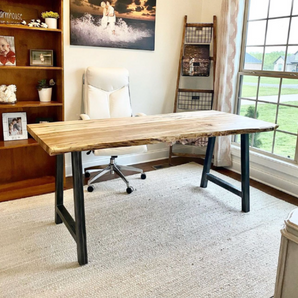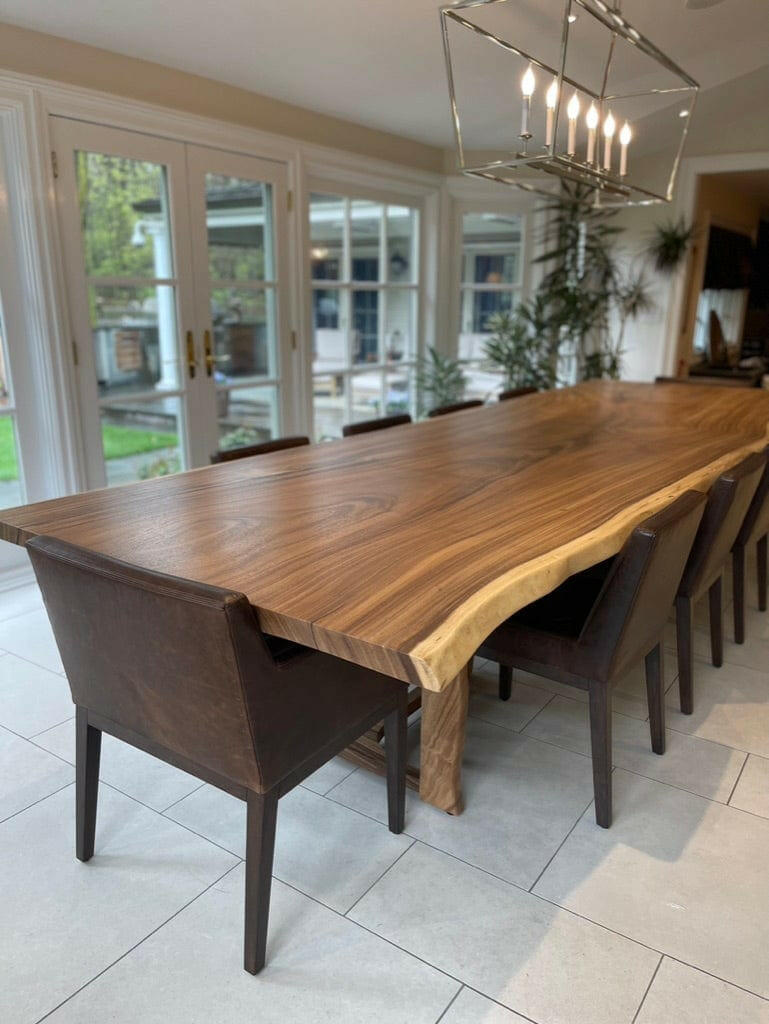Choosing the Perfect Table: What Styles Work Best for Your Home?
Picking the ideal dining table for your home can be a nuanced procedure that stabilizes visual appeals and performance. To browse these choices efficiently and discover a table that genuinely enhances your home, consider the complying with aspects in information.
Assessing Your Room
Evaluating the measurements and design of your eating location is an important primary step in picking the excellent eating table. Begin by measuring the length and width of the room, accounting for doorways, windows, and other architectural features that could influence table placement. This guarantees that your table not only fits but also enables comfortable movement around it.
Consider the number of individuals you typically entertain. A table should accommodate your household's daily demands while supplying enough adaptability for periodic guests. As a guideline of thumb, assign at the very least 24 inches of table width per individual to make sure a comfy eating experience.
It's likewise important to maintain appropriate clearance around the table. Preferably, there must be at least 36 inches in between the table side and walls or various other furnishings, allowing easy accessibility and motion. For areas where chairs with arms or additional storage space systems like buffets are involved, raising this clearance to 48 inches is a good idea.
Illumination and atmosphere play substantial functions as well. Guarantee that your table lines up with existing lighting components or plan for ample illumination solutions. This thorough spatial analysis warranties that your table not just fits physically yet likewise integrates with your space's total performance and visual.
Popular Table Styles

Standard eating tables typically feature ornate details, bent legs, and abundant wood surfaces, evoking a feeling of classic sophistication. They are perfect for homes with classic decor or those wanting to add a touch of elegance to their dining area.
Modern eating tables focus on simplicity and clean lines, typically incorporating products like glass and steel. These tables are optimal for contemporary rooms, supplying a smooth and uncluttered appearance that matches minimalist layout viewpoints.
Rustic dining tables, on the various other hand, highlight natural products and a handcrafted look - dining room table legs. They typically feature redeemed wood and a troubled surface, developing a warm and welcoming environment. These tables work well in farmhouse-style homes or those looking for a cozy, natural feel
Industrial eating tables combine resources such as metal and timber, frequently showcasing a practical aesthetic. This design is well-suited for lofts or city areas, including a touch of tough charm and longevity to the dining experience.
Each design provides distinctive advantages, making it necessary to pick one that aligns with your home's overall layout and your personal preferences.
Product Choices
When choosing a table, the choice of product plays an important duty in figuring out both the table's visual appeals and capability. Wood, metal, glass, and composite products each deal unique benefits and obstacles, making it crucial to straighten the material with your home's design and way of life demands.
Wood is a timeless and flexible alternative, readily available in varieties such as oak, walnut, and mahogany. Recognized for its sturdiness and warmth, wood matches both standard and modern insides. It calls for normal upkeep to protect against scratches and warping.
Metal tables, frequently crafted from stainless steel, aluminum, or wrought iron, are praised for their contemporary charm and toughness. They are especially fit for industrial or minimalist settings but can be prone to dents and might really feel cool to the touch.
Glass eating tables bring an air of style and visibility, suitable for smaller sized areas as they produce an illusion of more room. While easy to tidy, glass can be vulnerable to smudges and calls for careful managing to avoid chips and fractures.
Composite products, such as MDF and plywood, offer cost-effective and adjustable remedies, though they might do not have the durability of all-natural products. Picking the right material guarantees your table is both a practical possession and a visual joy.
Sizes And Shape Factors To Consider
After determining the proper product for your dining table, the following consideration is selecting the ideal shape and dimension to suit your room. The shape of the table substantially influences the area's visual and capability. Rectangular tables, the most usual form, are suitable for larger areas and can accommodate a higher number of guests. They also enable an extra formal dining experience. Alternatively, round tables foster a sense of intimacy and are superb for smaller sized dining locations, motivating conversation by getting rid of corners and making everyone feel equally consisted of.
Dimension is equally important and ought to be dictated by both the area's measurements and the number of people Home Page you prepare to seat regularly. As a regulation of thumb, allocate a minimum of 24 inches of table width each to make certain comfortable dining. Furthermore, think about the table's clearance area: there should go to the very least 36 inches in between the table edge and the walls or various other furnishings. This makes certain that restaurants can walk around easily without really feeling confined. Extending tables use versatility if you frequently organize larger celebrations, offering additional seating when needed without occupying extra room daily. Selecting the right sizes and shape guarantees both practicality and visual harmony in additional hints your eating location.
Matching Your Style
Selecting a dining table that balances with your existing style is essential in creating a cohesive and inviting room. A smooth, minimal table with tidy lines is suitable for a modern home, while a vintage, elaborate table suits a much more standard setting.
If your decoration includes warm tones and natural products, take into consideration a wood table to boost the organic feeling. Conversely, a glass or metal table might be more proper in a room controlled by trendy shades and commercial components.
Structure plays a vital role as well. A rough-hewn, redeemed wood table can include character to a rustic room, while a polished marble surface area can boost an elegant dining area. Lastly, consider the range and proportion of the table in connection with the space dimension and existing furnishings. A well-matched eating table not only enhances visual appeal but also enriches the general dining experience.

Verdict
Selecting the perfect dining table necessitates cautious consideration of Going Here area, style, materials, form, and dimension. Conventional tables enhance classic insides with abundant wood coatings, while modern-day tables fit contemporary setups with glass and metal.